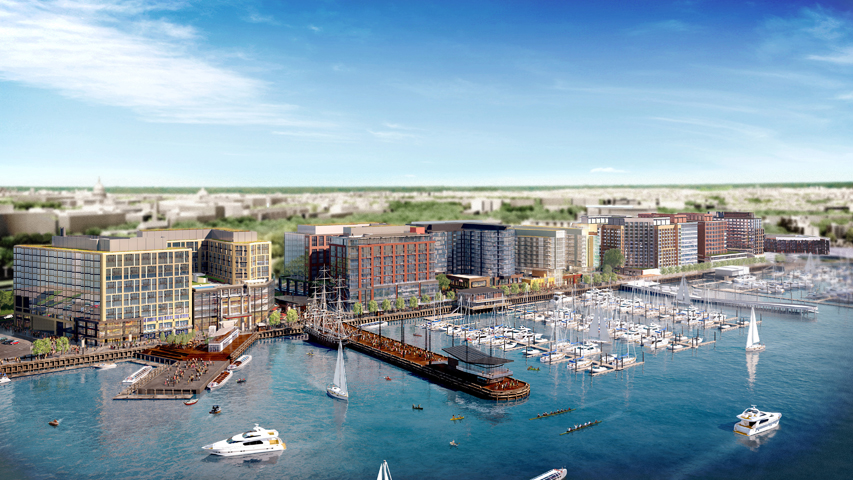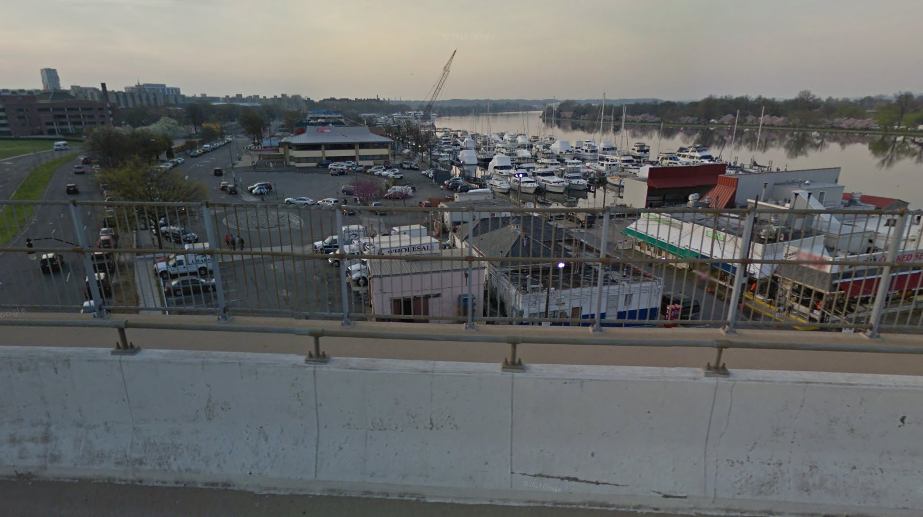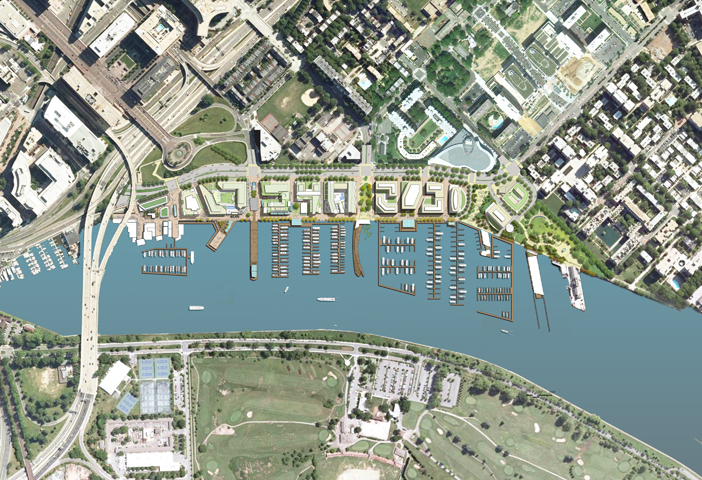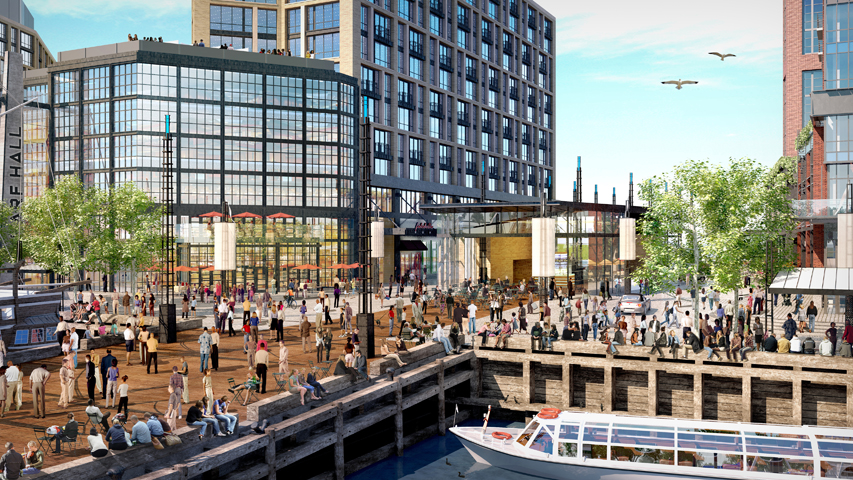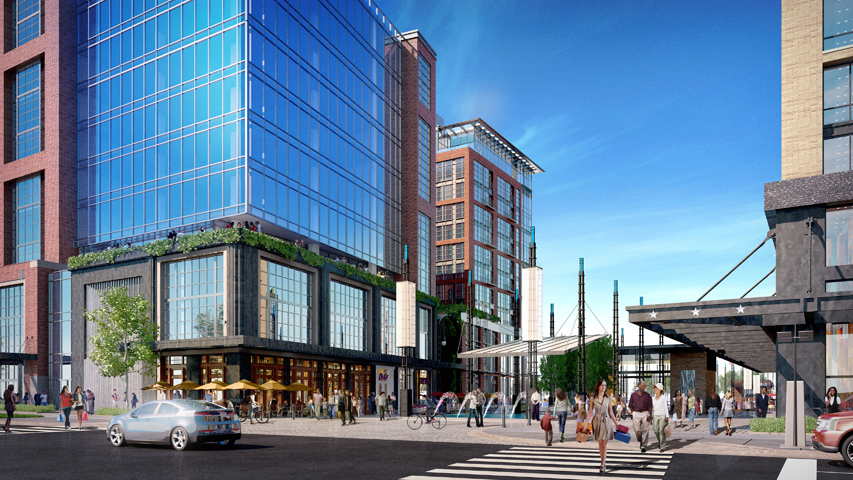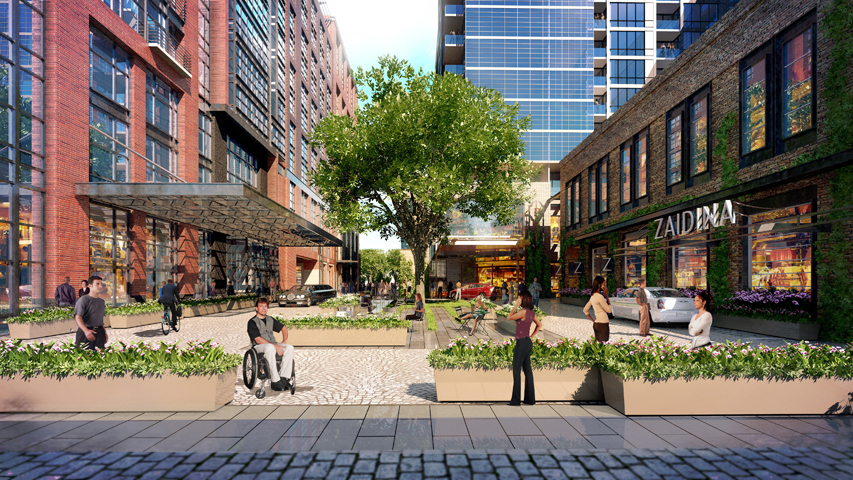With the I-395 overpass and expansive parking lots, Washington D.C.’s southwestern waterfront is more car-oriented than it is maritime. Because of this, the capital’s waterfront is missing out on the vibrancy of other cities by the water, such as Copenhagen, Venice, or Seattle.
The Wharf, a new wharf plan for the District, aims to change this scenario. The project, a team effort including the District of Columbia, Perkins Eastman and developer Hoffman-Madison Marquette, will transform the car-dominated streets into a complex of “shared space.” Greater Greater Washington reports that the street planning gives pedestrians priority, using subtle but effective visual cues instead of curbs and traffic signals. Paving selection that helps differentiate pedestrian, vehicular, and shared spaces is a key aspect.
The mixed-use complex will house retail, offices, housing, and public spaces such as parks and an extensive waterfront promenade.
The project broke ground in March 2014 and will be built in phases, with completion slated for 2020.
Visit The Wharf's official website for more information.
The current, car-dominated southwestern waterfront. Photo via Google Maps.
Ground plan of the Wharf. Courtesy of Perkins Eastman.
A view of the Civic Commons. Courtesy of Perkins Eastman.
Maine Avenue. Courtesy of Perkins Eastman.
The "Jazz Alley" at night. Courtesy of Perkins Eastman.
A piazza. Courtesy of Perkins Eastman
Related Stories
| Aug 11, 2010
Great Solutions: Healthcare
11. Operating Room-Integrated MRI will Help Neurosurgeons Get it Right the First Time A major limitation of traditional brain cancer surgery is the lack of scanning capability in the operating room. Neurosurgeons do their best to visually identify and remove the cancerous tissue, but only an MRI scan will confirm if the operation was a complete success or not.
| Aug 11, 2010
Great Solutions: Collaboration
9. HOK Takes Videoconferencing to A New Level with its Advanced Collaboration Rooms To help foster collaboration among its 2,212 employees while cutting travel time, expenses, and carbon emissions traveling between its 24 office locations, HOK is fitting out its major offices with prototype videoconferencing rooms that are like no other in the U.
| Aug 11, 2010
2009 Judging Panel
A Matthew H. Johnson, PE Associate Principal Simpson Gumpertz & HegerWaltham, Mass. B K. Nam Shiu, SE, PEVP Walker Restoration Consultants Elgin, Ill. C David P. Callan, PE, CEM, LEED APSVPEnvironmental Systems DesignChicago D Ken Osmun, PA, DBIA, LEED AP Group President, ConstructionWight & Company Darien, Ill.
| Aug 11, 2010
Inspiring Offices: Office Design That Drives Creativity
Office design has always been linked to productivity—how many workers can be reasonably squeezed into a given space—but why isn’t it more frequently linked to creativity? “In general, I don’t think enough people link the design of space to business outcome,” says Janice Linster, partner with the Minneapolis design firm Studio Hive.
| Aug 11, 2010
BIM school, green school: California's newest high-performance school
Nestled deep in the Napa Valley, the city of American Canyon is one of a number of new communities in Northern California that have experienced tremendous growth in the last five years. Located 42 miles northeast of San Francisco, American Canyon had a population of just over 9,000 in 2000; by 2008, that figure stood at 15,276, with 28% of the population under age 18.


